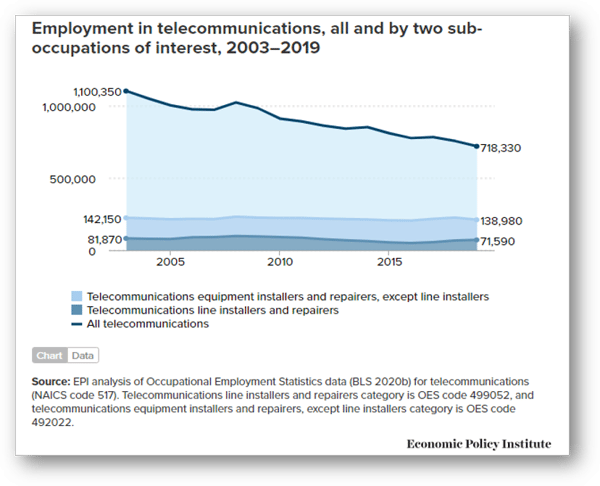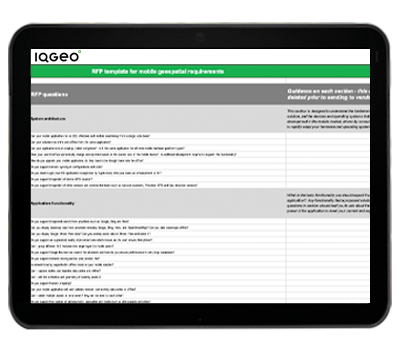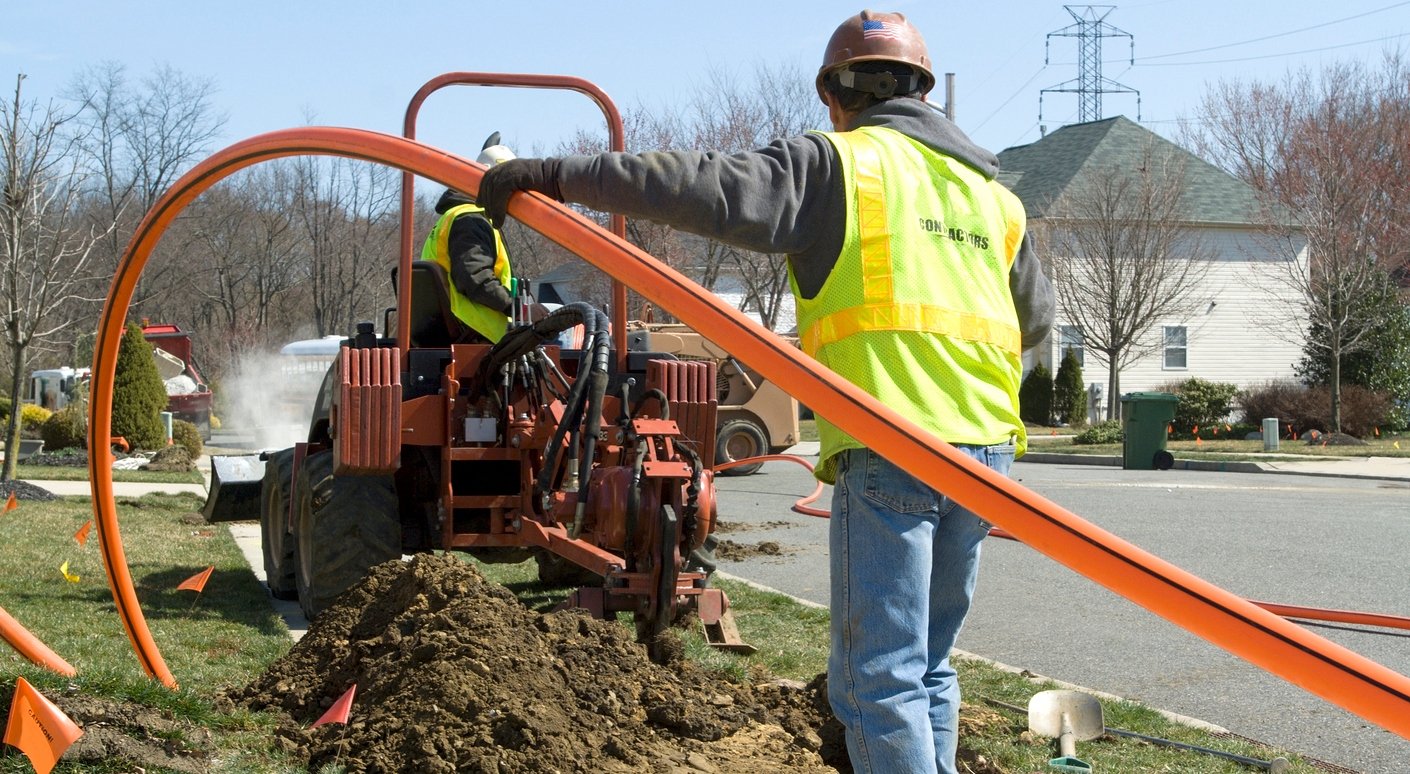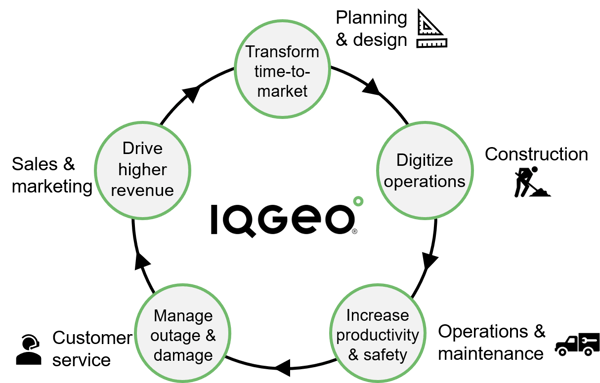As telecommunication networks increase in complexity and competition grows, those operators that can create and manage an accurate and up-to-date view of their network assets will be best placed for success. Fiber and 5G technologies are creating tremendous opportunities for network operators with the ability to deliver higher quality, higher margin services. However, with the number of U.S. telecoms employees declining by 35%1 between 2003 and 2019 combined with fiber networks now passing 54 million new homes2, operators must do more with less. Automation and productivity gains are essential to managing increased network complexity while meeting ambitious construction roll-out and revenue targets.

Transforming telecoms operations
The COVID-19 pandemic has required companies to look more closely and expeditiously at ways to automate their processes at a much faster pace than previously planned. Legacy systems and processes have highlighted many more bottlenecks than before due to the shift in working remotely. Many of the integrations and added intelligence components have always been a “like to have” in operations circles but one thing that working remotely has done is shine a light on just how important these integrations are to streamlining operational processes now and into the foreseeable future.
Successful transformation of telecoms operations to address these challenges requires empowering the field to easily monitor, capture, visualize, and manage network assets. This article explores why bringing NOC level visibility to the field can ensure long-term network growth by increasing operational efficiency, improving data quality, creating network resilience, and developing network maintenance strategies that reduces customer churn.
The standard NOC model and interaction with the field
There have been several different configurations of NOC’s over the years. While each has a different methodology for field interaction, but they usually fall into one of two broad categories:
- Centralized model where all the analysts are in a NOC and work at different tiers in the same location to support multiple regions.
- Hybrid regional operations centers which are located more within the areas of the system that are supported by different teams of field technicians.
In both scenarios there is still a level of expectation from the field that the NOC will provide accurate and timely information related to issues that arise.
Challenges facing telecoms network operations
There are a number of operational challenges that need to be overcome on an ongoing basis and this likely holds true wherever you are working today. For telecoms companies, some of the key challenges include:
Proliferation of advanced product offerings - Being constantly pushed to do more to increase efficiency and payload through advances in modulation types and technology. This mirrors the path of field operations today as they are a finite resource with growing responsibilities and are being asked to leverage technological advances and automation to meet the needs of the business.
Number of applications needed to troubleshoot and maintain these products - This really can be a bigger issue or missed opportunity more than people realize. What is important is that as good as these applications may be, they typically cannot represent all of the factors and telemetry that you might want to apply towards troubleshooting. This means that for a technician to interact and troubleshoot effectively, they are required to “swivel” between multiple applications to obtain the information needed to assist in remediation.
Knowledge capture and transfer - A lot of the most experienced team members who have been through almost this entire explosion of products and capabilities in the last 25 years are starting to retire. This is an often overlooked but major business concern, particularly in an industry where there is a constant influx of knowledge and processes for new products and technologies, while the knowledge pool of network understanding is simultaneously shrinking. There is a critical mass of technical expertise to be successful in the field and fewer people have this level of competence. This trend means that the collective knowledge within a group can change drastically as people retire or leave for new opportunities elsewhere.
Training capacity and gaps - Training is an ongoing challenge as it takes a large effort to make sure technicians are equipped with all the necessary information. Engineers are not getting the same level of on-the-job training as in the past as the overall knowledge base shrinks. Having the knowledge to do the job well has to be balanced against the demands of the business and critical SLA’s.
The complexity component - Expertise vs growing workload and technology advancement - There is a strong demand and need to take as much complexity as possible out of maintaining modern networks. The level of training and experience required to fully understand all the products is simply too great. It does not matter how good the tool or process is for the business, in the field environment it must be easy and intuitive enough to be adopted. It must make a technician’s job easier to do, and with technology this is often a huge challenge.
In a recent webinar hosted with ISE Magazine, we asked the attendees the following question related to the challenges they are facing:
Q - Which of these operational challenges resonates the most within your organization today?
- Advanced product offering rollouts
- Number of applications and tools needed to maintain these offerings
- Knowledge transfer in the field/training gaps
- Complexity of network (expertise vs growing workload)
A common theme that emerged from our poll questions was the critical need for effective operational mobility practices when optimizing field processes.
Considerations for evaluating operational mobility needs
Given the critical nature of field mobility to solving many of the operational challenges, it is important to consider this in more detail. While most Geographic Information Systems (GIS) can do a decent job of providing a level of field capability, there are certain imperatives that must be met to be truly considered “mobile-first” and realize the greatest possible benefits.
- One mobile architecture for any browser, any device, online or offline
- Powerful network engine for any network type
- Rapid field data capture tools
- Advanced network capture and management
- Distributed planning and design support
- Cloud-native design supports dynamic scaling, integration and more
- Extensive developer framework for app extensions
- Extensive security support and controls for the enterprise
- Ability to integrate everything
- Menu driven tools for data model development and extension
One of the more effective ways of improving the quality of your network data is with a seamless method for capturing discrepancies in the field when encountered and getting this information back to the design and planning teams in the office to update the System of Record (SOR). With the right mobile tools, crowd sourcing has the effect of empowering field crews actively participate in the process of capturing an accurate representation of their network. This transparency and collaboration restore confidence in the data which is also key to successful field user technology adoption.
Free template - RFP template for mobile geospatial requirements
With 136 detailed questions and supporting notes, IQGeo has produced an RFP template in an Excel format that will help you think through the various components of a successful mobile geospatial solution.

Empowering telecoms field teams
We had a recent rollout of IQGeo’s mobile-first geospatial software with a large telecoms customer in North America who deployed the new mobile tools across multiple regions throughout the country. They wanted to measure the performance uplift in having this mobile capability in the hands of the plant technicians in the field for their day-to-day tasks.
They conservatively calculated that the OSP technicians were saving 1.5 to 2 hours per day just by having all the information they need instantly accessible on their mobile devices. To further quantify overall return on investment, they also compared MTTR times pre and post rollout across their regional deployments and they could see a positive correlation between rollout and a reduction in MTTR. While these were early results, the benefits of an easy-to-use mobile tool was clear to see and simple to quantify for their business.
Creating a System of Action that delivers clear ROI
With today’s complex network environments systems as-built plant and design data often comes from many different sources. Often times acquisitions over the years have compounded this issue, making it very difficult to have a cohesive and interactive representation of the network. Having an environment that can intake, sync, and utilize a wide range of data sources is absolutely essential to creating a true ‘System of Action’.
A System of Action empowers field crews and office staff to easily monitor, capture and edit network information anywhere, anytime. A living digital twin of the physical network assets that is integrated with business-critical applications and data streams. This creates a single source of actionable network truth seen through a powerful geospatial view that is shared across enterprise planning, design, construction, maintenance, and sales processes.
Everyone benefits from NOC level visibility in the field
A geospatial mobility strategy is not a full solution if it doesn’t improve the operational performance of the entire organization in both direct and indirect ways. Here are a few examples of departments we have seen leverage a rich geospatial System of Action:
Marketing – Review and analyze market penetration by product in a given area. Overlay competition data to better understand the competition at a customer level.
Human Resources – Create an area based communications channel that captures major incidents in order to reach out to affected employees with appropriate information.
Contractors – Contractors can receive information at a predetermined level, so no sensitive information is exposed and have a paperless avenue for doing walkouts and preliminary design feedback for new construction.
Capacity planning – The ability to have full insight on a nodes performance including usage data of all connected devices allows you to run a designed node split scenario against actual end user historical usage levels to determine viability of design to alleviate traffic issues effectively.
Construction – Construction departments are shedding their paper trails and digitizing their processes which make for less mistakes, quicker turnaround, happier customers.
Field and office connections
We all know that the NOC is a crucial command center of almost all operational activities. Extending a number of these capabilities to the field for visibility of issues and effective triaging only serves to strengthen that connection between the field and office and in these times, this is needed more than ever.
To hear more on this topic, check out a recent webinar we hosted with ISE Magazine and learn more on how bringing NOC level visibility to the field will transform your business.
1 – Economic Policy Institute: Decades of slow wage growth for telecommunication network workers. (October 5, 2020)
2 – Fiber Broadband Association: 2020 Advanced Broadband Report (December 3, 2020)





 Previous
Previous




